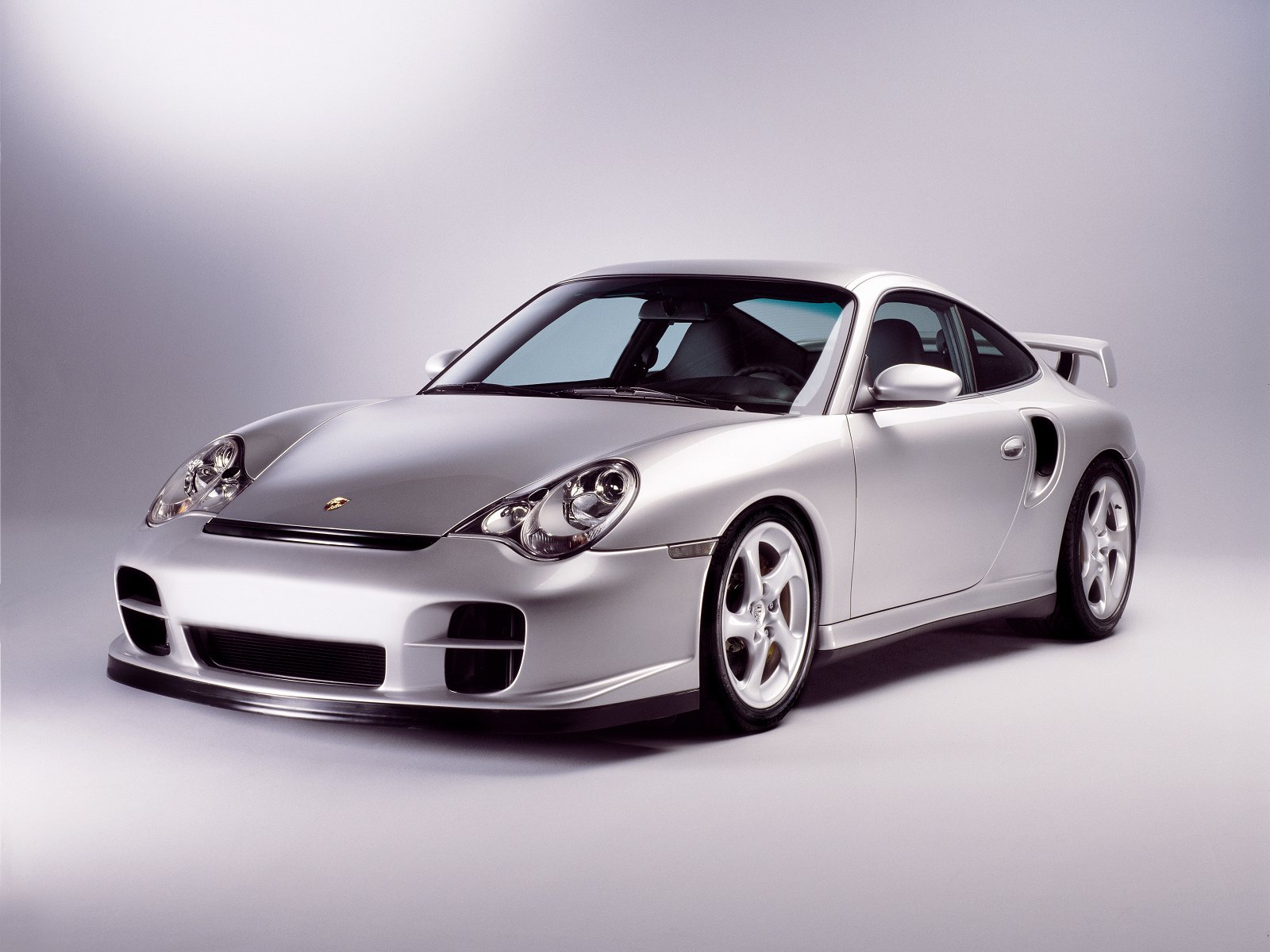Porsche 911
Ninth Generation (1999-2003)
The first truly all-new 911 finally appeared for the 1999 model year with the "996." Sharing no body panels, no underbody structure and no major mechanical components with previous 911s, the 996 had more in common with the Boxster than it did with any previous car that wore the 911 name. The 996 was 6.8 inches longer than the 993 overall (a total of 174.5 inches — just two-tenths of an inch shorter than a 2003 Civic Coupe) and rode on a relatively long 92.6-inch wheelbase. The engine, however, was still in the back where it "doesn't belong." The front suspension was again MacPherson struts and the rear was held up by a new multilink system with coil springs.
The 996's engine was a wholly new piece itself. Still a flat six, it was now water-cooled and used DOHC heads with four valves per cylinder and incorporated variable valve timing. Displacing 3.4 liters, the new engine ripped out 296 horsepower while breathing through the latest Bosch Motronic fuel injection.
The driving experience of the 996 is different than all previous 911s. It's a more civilized ride, with less immediate reflexes and more composure over bumps and road irregularities. Is it as good as the old 911? That's a subjective evaluation. Some like it more, some feel it to be a betrayal of the car's air-cooled heritage.
There were no Turbo or Targa models available during '99 but both two- and all-wheel drive were offered with either the coupe or Cabriolet. That just gave Porsche a Turbo and Targa to develop during the 21st century.
The 2000 model naturally aspirated 911s were carried over from '99 except that a new exhaust bumped output to 300 horsepower. And stability control, already standard on the Carrera 4, becomes optional on Carrera 2 models. This was enough to impress Edmunds' own Karl Brauer. However, in Europe, the Turbo was already back, and it would return to America during 2001 with a vengeance. A 911 GT3 was offered during 1999 and 2000 in Europe with a 3.6-liter engine making 360 horsepower and featuring a radical two-tier rear wing. It was mighty special and indicated to the world that special-edition 911s would continue with the 996 generation.
The new 2001 911 Turbo used a twin-turbocharged, water-cooled 3.6-liter flat six to make 415 horsepower which it distributed through an all-wheel-drive system. Edmunds.com got its first taste of the 911 Turbo in 2001 with Senior Road Test Editor Brent Romans pronouncing, "This car is the pinnacle. It is The Beatles' Sergeant Pepper's, a bottle of Dunn 1980 Cabernet Sauvignon or Star Trek's Wrath of Khan." For the first time, the Turbo could also be had with an automatic Tiptronic transmission. Why anyone would want that remains open to speculation. Other updates for '01 included power releases for the engine cover and front luggage compartment, a new audio system boasting a subwoofer, a redesigned (three-spoke) steering wheel and "Turbo Look" wheels for non-turbo 911s.
For 2002, Porsche rolled out the most extreme 996-based 911 yet, the GT2. Weighing 200 pounds less than the mighty Turbo and with an even more powerful engine, the 456 horsepower GT2 was not for the foolhardy or inexperienced pilot — it sent all those restless horses to the rear wheels (unlike the Turbo with its all-wheel drive) and couldn't be had with Porsche's stability control system. The standard 911s got more power (now up to 320 horsepower) via a bump in displacement, from 3.4 liters to 3.6 liters). Other big news included the return of the Targa model after a four-year vacation and the fitment of a glass rear window to the Cabriolet. Detail changes included the fitment of Turbo-style headlight clusters (that helped differentiate the $70,000 911 from its $43,000 baby brother, the Boxster), the installation of a real glovebox and a single cupholder along with the option of Bose audio and a number of new wheel designs.
The 911 quietly rolled into 2003 with minor changes including slightly revised front and rear fascias and gray-tinted (versus the previous yellow) turn signal lenses.
